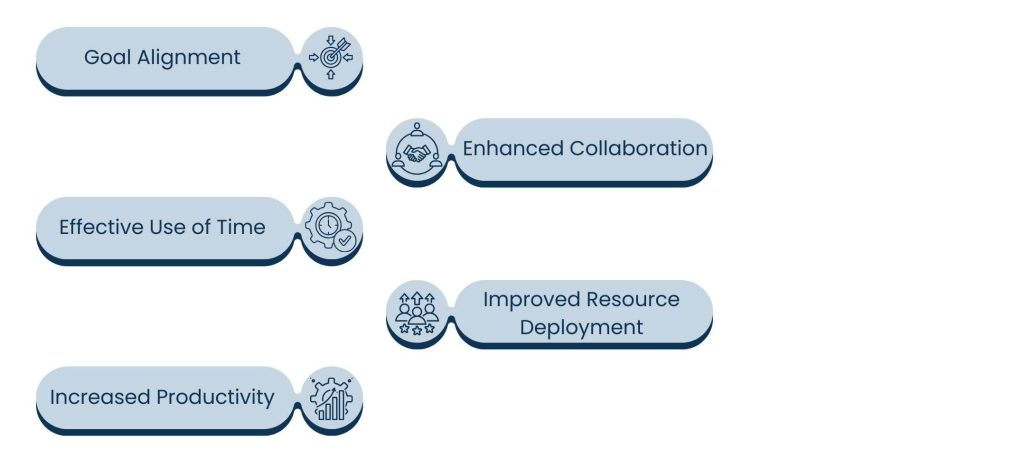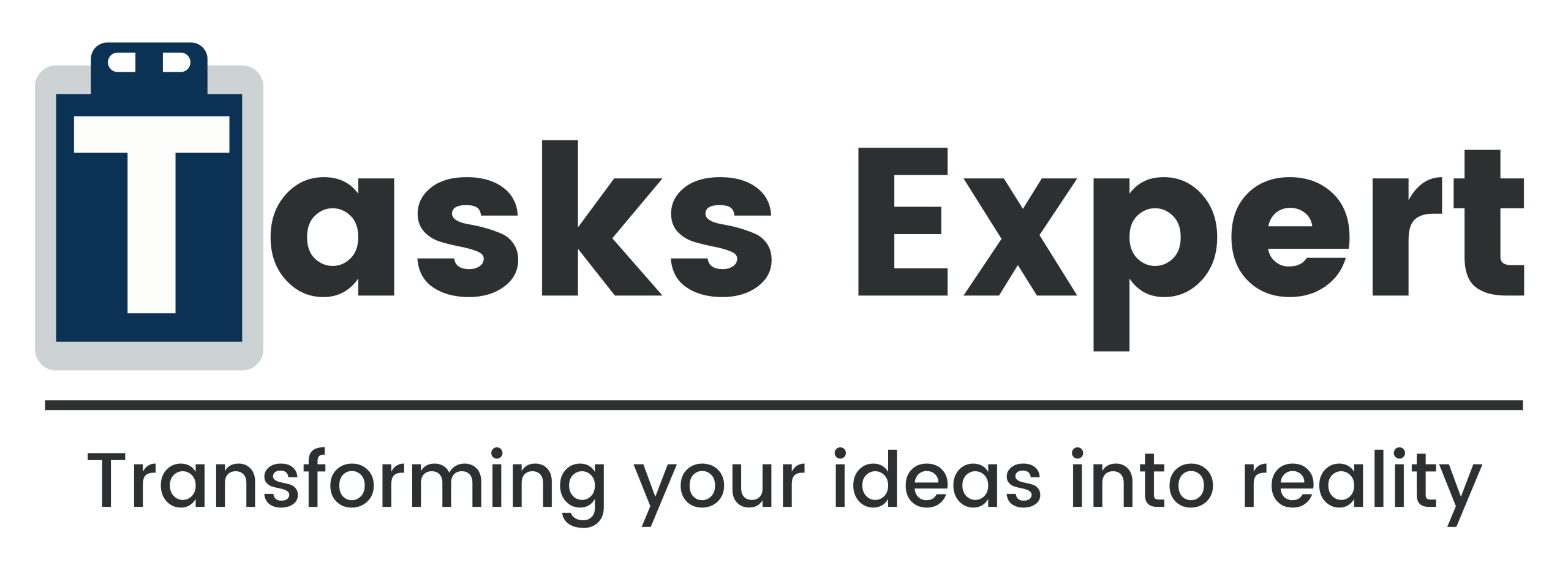Introduction
Productivity as a manager, business owner, or working professional essentially comes down to how you plan your daily tasks. Multitasking and setting priorities greatly aid in keeping job activities under control. Although multitasking has the potential to boost productivity, it usually leads to errors, exhaustion, and delays. By giving critical tasks top priority, setting priorities aids in concentration and increases productivity. Hence, Task Prioritization becomes crucial for businesses.
Anyone looking to increase output without sacrificing quality must understand how these two approaches differ from one another. Task prioritizing concentrates energy where it is most needed, whereas multitasking diverts attention.
Here in this blog, we will explore the difference between multitasking and task prioritization. How picking the best approach can change your workday, affect productivity, and more.
Why Task Prioritization Improves Productivity?
Task Prioritization refers to the method of classifying tasks in terms of urgency, importance, and value. Rather than attempting to do everything simultaneously, experts are able to prioritize what provides the most impact. By doing so in an organized manner, time is saved from wasted efforts, and the correct tasks are done at the appropriate time.

The following are the reasons why prioritization yields better outcomes:
Clear Priority on High-Value Work:
By prioritizing tasks, you guarantee the most important projects get done on schedule while less critical ones are tackled later. This enables you to pour your best energy and imagination into work that creates the biggest impact. Over a period of time, regular prioritization of highly impacted tasks snowballs into powerful outcomes and quick progress toward objectives.
Improved Time Management:
Prioritization directs daily activities to meet deadlines without stress and hassle. This enhances productivity and also provides space for deep work and improved output.
Better Decision-Making:
Setting priorities helps people plan their daily tasks to meet deadlines, which reduces stress and last-minute hurry. Instead of reacting to things as they arise, you control how time is spent. This improves production and creates space for in-depth work in addition to increasing productivity.
Reduced Burnout:
Methodically organizing work prevents overload and provides an overview of task completion. Handling an assignment gets easier with step-wise completion of tasks. Over time, it reduces mental fatigue and guarantees production without exhausting workers.
Alignment with Objectives:
Prioritization guarantees tasks are directly contributing toward long-term goals rather than merely short-term busywork. This keeps groups and individuals moving in the same direction, especially in big companies. A link between daily tasks and goals automatically boosts motivation and accountability.
Additionally, professionals stay focused, productive, and targeted by using frameworks like the Pareto Principle or the Eisenhower Matrix. Prioritization concentrates on activity that gives results instead of paying attention to low-value tasks. That’s why senior-level professionals hire virtual personal assistants to increase productivity.
The Downside of Multitasking
Multitasking is usually credited as a mark of efficiency, but each task gets minimal attention. The mind takes time to re-adjust, resulting in delays and mistakes when switching tasks. Initially, it seems like progress with low productivity.

Here’s why multitasking can damage productivity:
Decreased Accuracy:
Sharing attention causes errors, particularly in detail-oriented jobs. Small mistakes accumulate over time, canceling out the apparent time savings. For organizations, this can result in quality difficulties, unsatisfied customers, and higher prices.
Slower Completion Times:
Task switching generates mental lag, which is time-intensive. According to research, even minor delays can cause an activity to take twice as long to finish. You end up stretching out numerous chores without actually completing any of them, rather than doing one task effectively.
Higher Levels of Stress:
Always running around with tasks can be frustrating and mentally exhausting. Keeping up with several responsibilities builds up cortisol levels, which harm focus and well-being. This type of stress decreases overall productivity in the long run and results in burnout.
Lower Creativity:
Multitasking undermines the focused concentration required for creative thought. When your focus is divided, it is more difficult to combine thoughts, plan strategically, or be imaginative. This reduces problem-solving skills and makes it more difficult to develop significant or unique material.
Missed Deadlines:
Valuable tasks tend to fall behind with divided attention. Multitasking also develops unrealistic expectations, since employees feel more productive despite not completing high-value activities. This later leads to missed opportunities, project delays, and client unhappiness.
Although multitasking might feel efficient at the moment, studies indicate that it decreases productivity up to 40%. The cognitive price of changing focus is elevated, and corporations confuse movement with accomplishment. On the other hand, single-tasking through task prioritization brings about simplicity, decreases errors, and completes projects with quality and consistency.
The Psychology Behind Task Prioritization vs. Multitasking
Productivity isn’t only about tools or methods—it’s also about brain function. The human brain is designed to concentrate intently on one thing at a time. When we attempt to multitask, we incur “switching costs” whereby attention is split and effectiveness decreases. It is for this reason that task prioritization fits more naturally with the workings of the mind, while multitasking will tend to cause mental exhaustion.

Here’s the psychology behind it:
- Cognitive Load Management: Working memory has a limited capacity. Prioritization minimizes overload by working on fewer tasks, while multitasking overloads memory with mistakes.
- Attention Span and Flow: Deep focus allows flow, a state where productivity is highest. Task prioritization helps it, while multitasking continuously breaks it.
- Decision Fatigue: Multitasking exhausts mental energy with repeated micro-decisions. Prioritization makes decisions easy by establishing a definite order of action.
- Stress and Anxiety: Multitasking results in stress hormones from excessive switching. Setting priorities creates a structured approach, which lowers stress.
- Learning and Retention: Prioritizing tasks helps people retain more knowledge, while multitasking impairs memory and understanding.
Understanding these psychological aspects makes it evident that when the brain can concentrate on structured objectives instead of frantically multitasking, productivity rises.
Most Popular Task Prioritization Methods Professionals Employ
There are a number of tried-and-tested frameworks professionals employ to prioritize. These strategies assist in categorizing tasks in terms of priority, urgency, and impact, and workload management becomes a reality.

Some of the most useful prioritization techniques are:
- Eisenhower Matrix: Divides the work into four quadrants: urgent/important, important/not urgent, urgent/not important, and not urgent nor important. It helps professionals concentrate on what matters most.
- Pareto Principle (80/20 Rule): Promotes concentration on the 20% of work generating 80% of output, to deliver maximum efficiency.
- MoSCoW Method: Segregates the work into Must have, Should have, Could have, and Won’t have. Helpful in project management.
- ABC Method: Gives tasks an A, B, or C rating depending on priority, assisting employees to easily sort priorities.
- Time Blocking: Schedules precise time slots for highest-priority tasks to ensure concentration and stay focused.
These techniques provide task prioritization in concrete terms instead of theoretical ones, assisting experts and teams to schedule efforts according to actual objectives.
How Task Prioritization Enhances Workplace Efficiency?
Efficiency measures how effectively teams meet deadlines and produce results. Through the implementation of structured task prioritization, organizations establish focus and prevent unnecessary effort. This results in ensuring that work not only gets done sooner but is also properly aligned with overall business goals.

Here’s how prioritization enhances efficiency:
Goal Alignment:
Prioritization ensures that each day’s work is in line with business goals, such that employees are not merely busy but productive. Rather than spending time on efforts that do not drive the needle, teams invest their time in initiatives that directly contribute to growth. This builds a tighter connection between effort and quantifiable business outcomes.
Enhanced Collaboration:
Teams are aware of what tasks need priority, lessening the conflicts and redundancies. Facilitated prioritization also enables leaders to set expectations, so everyone knows their part in meeting common goals. This does away with confusion and allows for better teamwork.
Effective Use of Time:
Deadlines become easier to meet when significant tasks are accomplished first. No more hours are spent by employees deciding what to do next, and managers feel assured to schedule projects knowing the most important work is being undertaken. This generates momentum and feelings of accomplishment among teams.
Improved Resource Deployment:
Instead of diluting resources, managers can deploy them where they are most useful. Setting priorities aids in the smart use of funds, tools, and staff time.
Increased Productivity:
Setting priorities helps distributed teams remain in sync across time zones in remote or hybrid settings. Task frameworks that are clearly specified reduce misunderstandings and guarantee that work continues even when teams are working asynchronously. As a result, projects can proceed easily.
Employees spend less time thinking about what to do next and more time accomplishing work that produces outcomes through well-defined assignments.
The Secret Costs of Multitasking in Business
Despite appearing to be a productivity trick, the secret costs of multitasking tend to exceed short-term gains. Multitasking can waste resources, lower the quality, and decrease long-term ROI. Companies are not always aware of these costs until they begin to accumulate in terms of lost revenue, employee turnover, or missed opportunities.

Here’s why multitasking harms businesses:
Errors and Rework:
Split attention creates errors that take additional time and resources to correct. For instance, an easy mistake in a budget report might take hours of correction and harm client trust. Such errors mount and quietly wear away at overall productivity.
Missed Deadlines
Continuous task-switching hinders progress, pushing deadlines. Teams can be seen as being busy, but with divided attention, key projects are progressing too slowly. The delay frequently compels businesses to postpone launches, increase timelines, or lose client trust.
Decreased Employee Morale:
Multitasking leads to stress and frustration, with low job satisfaction, and accelerates burnout. Overwhelmed employees are less motivated, more apt to make errors, and more likely to quit. This incurs unseen recruitment and training costs.
Lowered Creativity
Workers are less likely to innovate when they’re overspread with too many tasks. Problem-solving creatively needs full focus, and multitasking never permits it. This eventually suppresses innovation and decelerates the growth of the company.
Revenue Loss:
Errors, inefficiency, and turnover due to multitasking have a direct effect on profitability. Missed deadlines and resulting lost opportunities through substandard work or lost sales can snowball fast, reducing the bottom line. These unseen expenses make multitasking a weakness, not a strength.
The pretense of “doing more” through multitasking usually boils down to “getting less done” for businesses. In contrast, prioritized task management maintains productivity, targets, reduces waste, and guarantees steady growth toward business objectives and yields revenue.
Conclusion
The multitasking versus prioritization argument is a war between quality and quantity. Prioritizing leads to quantifiable productivity returns by focusing energy in the right direction, while multitasking produces illusions of progress at the cost of efficiency and concentration.
The decision is simple for professionals and companies alike: intentionally prioritize instead of disseminate attention. You can minimize anxiety, maximize scheduling, and preserve long-term productivity, along with getting more important things done, using proven prioritization techniques.
About Us
Tasks Expert offers top-tier virtual assistant services from highly skilled professionals based in India. Our VAs handle a wide range of tasks, from part time personal assistant to specialized services like remote it support services, professional bookkeeping service etc. Furthermore, it helps businesses worldwide streamline operations and boost productivity.
Ready to elevate your business? Book a Call and let Tasks Expert take care of the rest.









